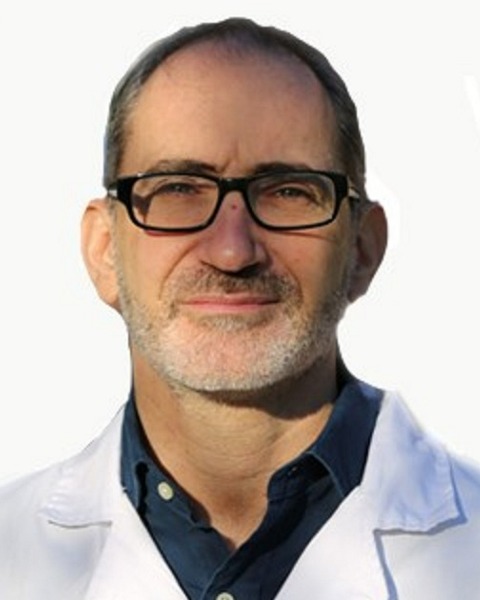Rapid Fire Abstracts
Validation and reproducibility of 18F-FDG PET uptake mapping in the aortic wall and thrombus (RF_FR_383)
- MF
Marta Ferrer-Cornet, BSc
Medical Imaging Research Technician
Vall d'Hebron Institut de Recerca, Spain - MF
Marta Ferrer-Cornet, BSc
Medical Imaging Research Technician
Vall d'Hebron Institut de Recerca, Spain - MB
Mireia Bragulat-Arévalo, MSc, BSc
Medical Imaging Research Technician
Vall d'Hebron Institut de Recerca, Spain - LD
Lydia Dux-Santoy, PhD
Researcher
Hospital Universitari Vall d'Hebron, Spain - RO
Ruper Oliveró, MSc, BSc
Cardiologist
Vall d'Hebron Hospital, Spain - GT
Gisela Teixido-Tura, PhD, MSc, BSc
Cardiologist
Vall d'Hebron Hospital, Spain - JG
Juan Garrido-Oliver, MSc, BSc
Medical Imaging Research Technician
Vall d'Hebron Institut de Recerca, Spain - LG
Laura Galian-Gay, MD, PhD
Cardiologist
Hospital Universitari Vall d'Hebron, Spain - JG
Jose Ramon García Garzón, PhD, MSc, BSc
Nuclear medicine specialist
CETIR, ASCIRES, Spain - NM
Noemi Martinez Esquerda, MSc, BSc
Nuclear medicine specialist
CETIR, ASCIRES, Spain - AC
Alba Catalá-Santarrufina, MSc, BSc
Medical Imaging Research Technician
Vall d'Hebron Institut de Recerca, Spain - JS
Javier Solsona, PhD, MSc, BSc
Cardiologist
Vall d'Hebron Hospital, Spain - IF
Ignacio Ferreira-González, PhD, MSc, BSc
Cardiologist
Vall d'Hebron Hospital, Spain 
José F Rodríguez Palomares, MD, PhD, FSCMR
Head of Cardiovascular Imaging Department
Hospital Vall d'Hebron, Spain
José F Rodríguez Palomares, MD, PhD, FSCMR
Head of Cardiovascular Imaging Department
Hospital Vall d'Hebron, Spain- AG
Andrea Guala, PhD
Engineer
Hospital Universitari Vall d'Hebron, Spain
Primary Author(s)
Co-Author(s)
Presenting Author(s)
Co-Author(s)
Positron Emission Tomography (PET) uptake allows for the assessment of molecular activity, with 18F-FDG uptake being analogue of glucose metabolism. Commonly, PET uptake is quantified by manually drawing regions of interest, but this method is subjective, poorly-reproducible and may miss relevant information. This study aimed to develop, test and validate an image analysis implementation to quantify 18F-FDG uptake maps in the aortic wall.
Methods: PET-MRI was acquired in 72 patients with either thoracic or abdominal aortic aneurysms. The lumen and thrombus were semi-automatically segmented in the MR angiography and merged. A superficial mesh was created and expanded by 3 mm inward and outward, representing the aortic wall space. PET uptake was interpolated over this volume with a uniform spatial resolution of 1 mm. By means of 9 reference points, the aortic wall was discretized into 52 (thoracic) or 80 (thoraco-abdominal) standardized regions (i.e. wall patches). For each aortic patch and for the whole thrombus volume, the median standard uptake value (SUV) was quantified. Maximum uptake in regions were compared with expert annotation for validation. The whole procedure was repeated by a second observer in 23 randomly-selected patients.
Results:
The technique was feasible in the 100% of patients and 99.6% of aortic wall patches. The image analysis workflow was very reproducible, resulting in Dice scores of 0.9 [0.57, 0.91] and 0.85 [0.78, 0.88] for aortic and thrombus segmentations, respectively, and in excellent co-localization for anatomical references (5.74 [3.62, 8.73] mm). The inter-observer reproducibility of aortic wall SUV mapping was excellent (ICC of 0.93 [0.93, 0.94]) as it was for SUV quantification in the thrombus (Figure 1, Figure 2). The validation of regional SUV values showed excellent agreement (Figure 3).
Conclusion:
A reproducible and accurate image analysis method to map PET uptake along the aortic wall was developed, extending the possibilities to study the interaction between aortic wall molecular activity and local characteristics.

